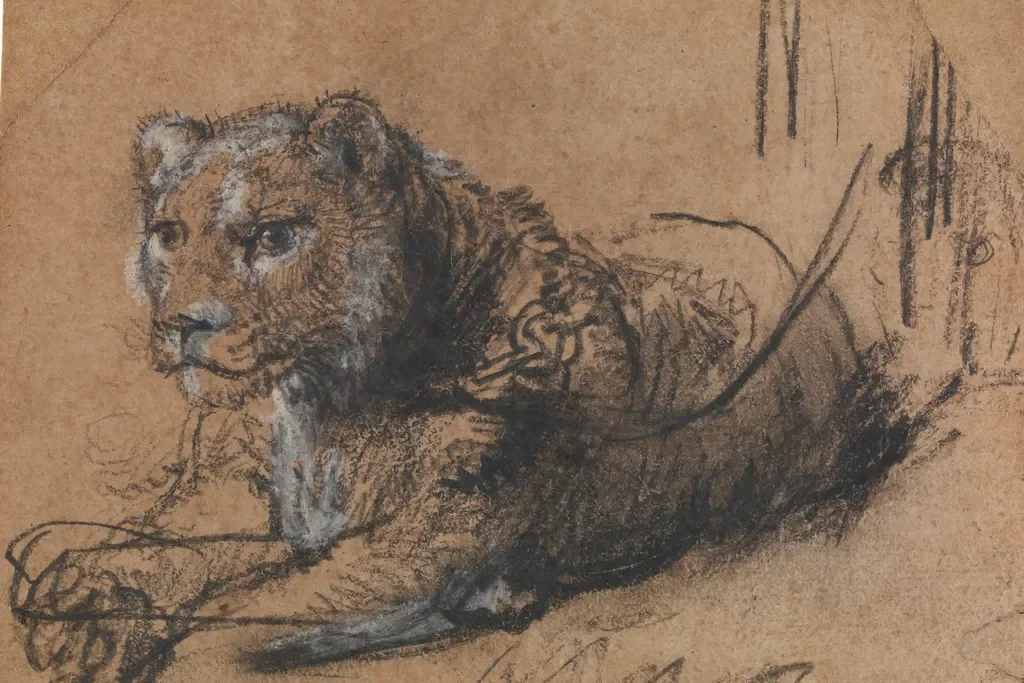
Rembrandt’s Artistic Legacy: Auctioning A Lion Sketch For Wildlife Conservation
In a remarkable fusion of art and conservation, a sketch titled “Young Lion Resting” by the Dutch master Rembrandt van Rijn is set to be auctioned to support wildlife preservation efforts. This auction not only reflects a growing trend among art collectors to champion environmental causes but also highlights the historical significance of wildlife in artistic masterpieces. As we dive into this intriguing story, let’s explore why this auction is more than just a sale of a drawing.
The sketch will be part of the exhibition “From Rembrandt to Vermeer, Masterpieces From the Leiden Collection” now on display at the H’ART Museum in Amsterdam. The exhibition is a landmark event, showcasing 75 works from the Leiden Collection, including 18 by Rembrandt. This collection represents one of the most extensive assortments of 17th-century Dutch art housed in a private collection.
Rembrandt's connection to wildlife is particularly poignant. The “Young Lion Resting,” created circa 1638-1642, evokes a sense of intimacy and reflection that transcends mere representation. It was inspired by real-life experience; Rembrandt likely sketched lions during animal exhibitions brought to Amsterdam by Dutch trading vessels. This sketch not only demonstrates his artistic prowess but also reflects on humanity's relationship with nature—how closely we observe and, perhaps, how we fail to understand it. “Rembrandt gives a greater interior life to a cat than most artists can to a human,” notes Thomas Kaplan, co-founder of Panthera and the buyer who aims to sell the piece for conservation funding.
Kaplan’s intent behind auctioning the sketch is commendable and highlights the responsibility artists and collectors have toward wildlife conservation. His organization, Panthera, focuses on protecting various big cat species, and the funds raised will bolster these efforts. As Kaplan highlighted, “Wildlife conservation is the one passion I have which surpasses Rembrandt.” This interplay between art and activism reflects a growing consciousness within the art community about its role in addressing pressing global challenges.
Indeed, art has historically served as a mirror to society and nature. Rembrandt’s depiction of subjects—especially animals, like lions—serves as a reminder of their majesty and vulnerability. In a world increasingly challenged by habitat loss and endangerment of species, Kaplan’s auction initiative raises essential questions: Can art serve as a conduit for environmental awareness? How can artists, collectors, and audiences alike contribute to preserving the natural world?
The exhibition at H’ART Museum will run until August 24, 2025, providing ample opportunities for art enthusiasts to engage with Rembrandt’s legacy while reflecting on contemporary issues of conservation. As you consider the significance of pieces like the “Young Lion Resting,” ponder the dual purpose they may serve—appreciation for artistic genius and a catalyst for positive change in wildlife preservation.
Join the conversation—how does art influence your perception of nature? Your thoughts could be the spark for new initiatives in conservation!